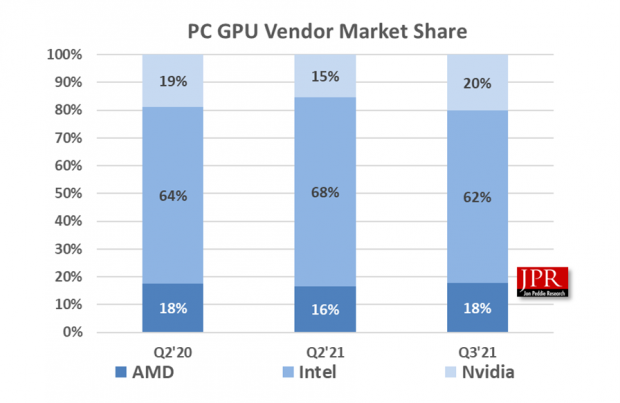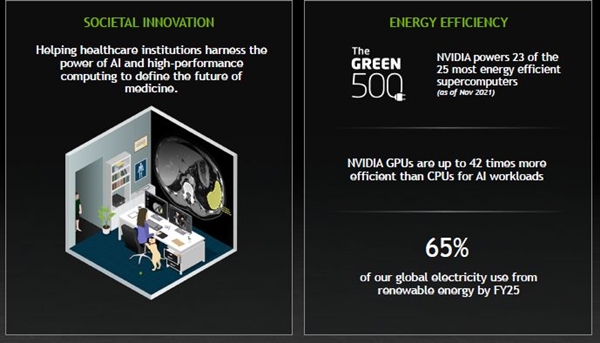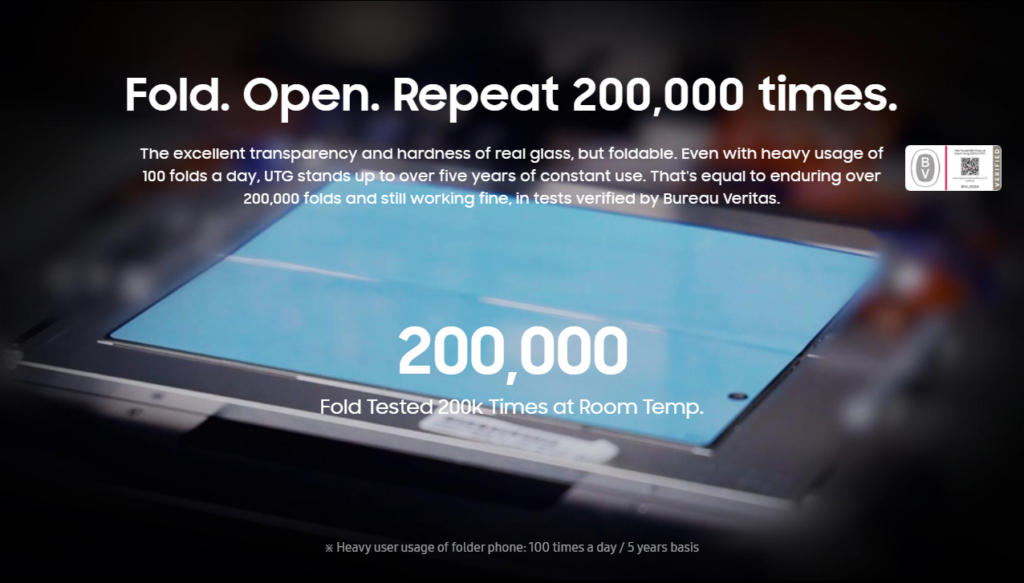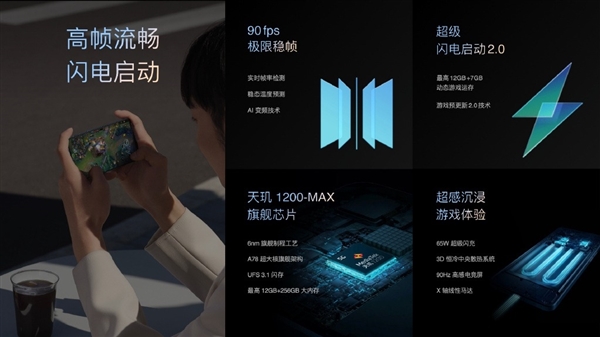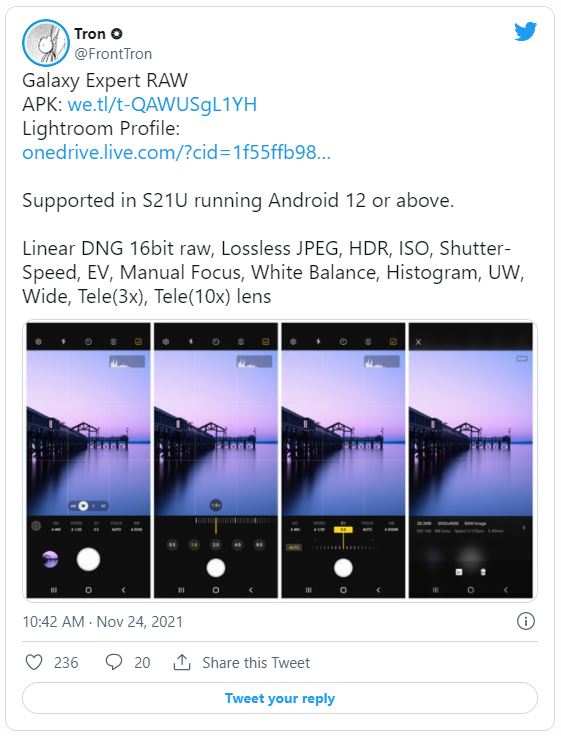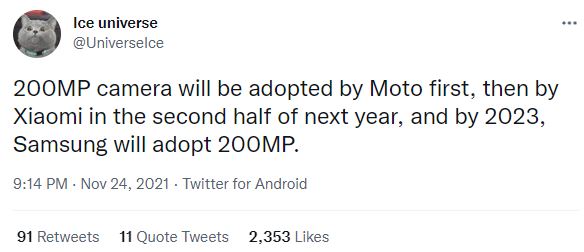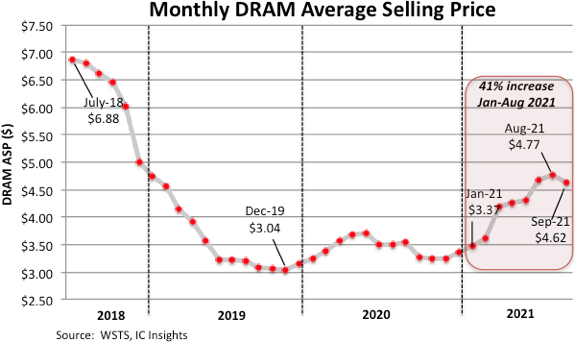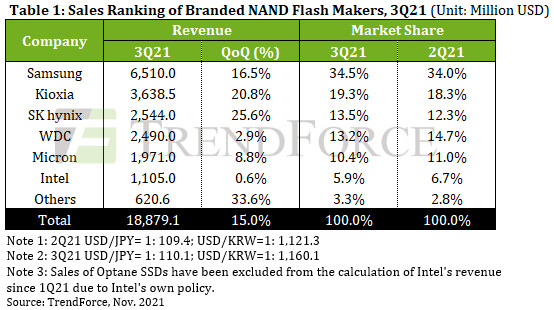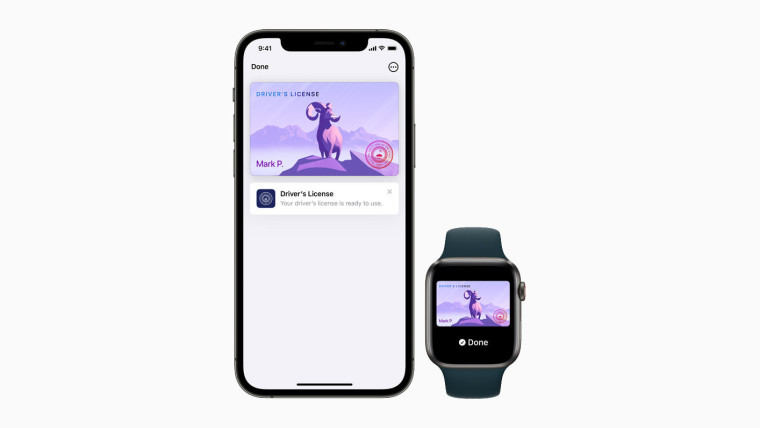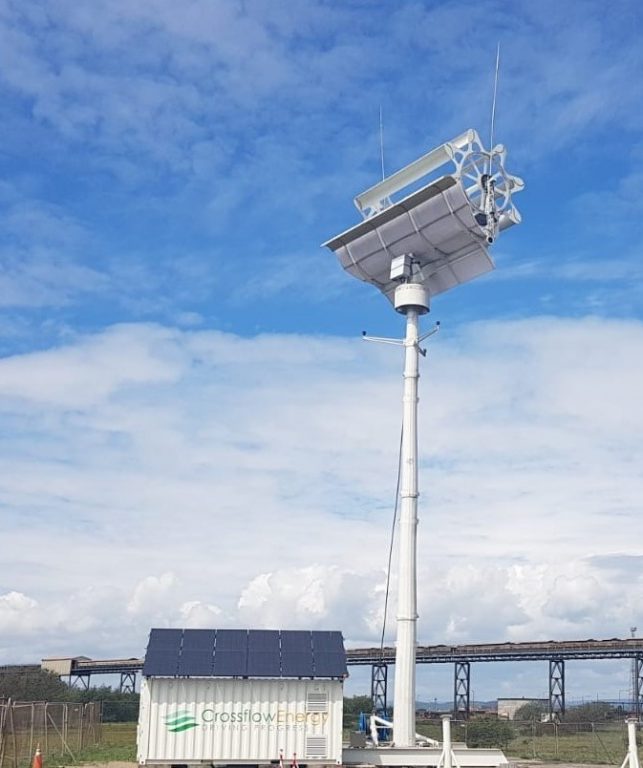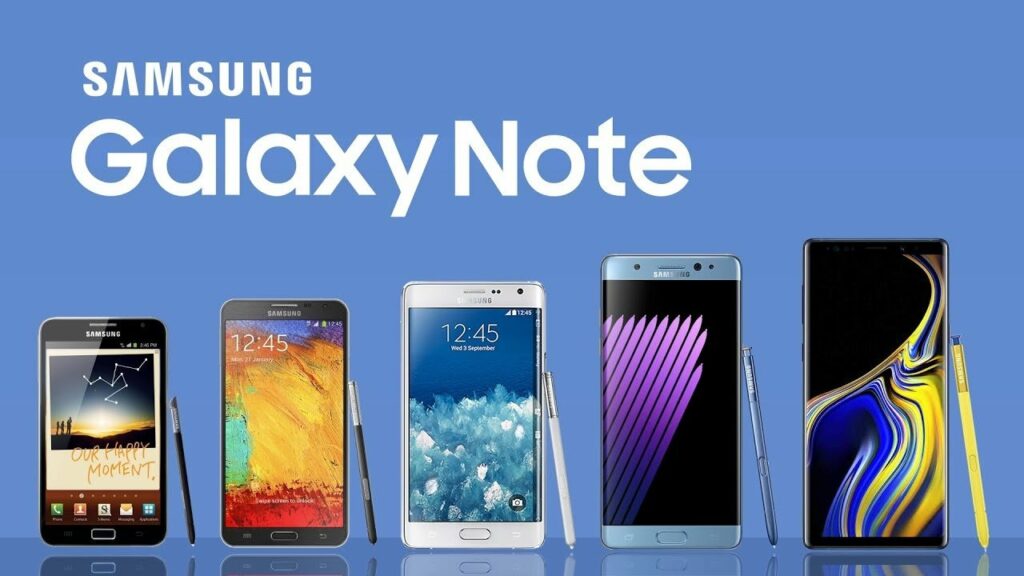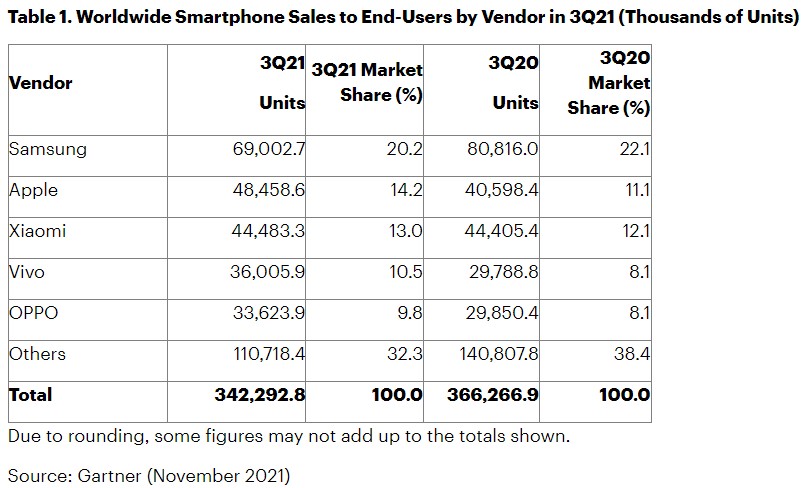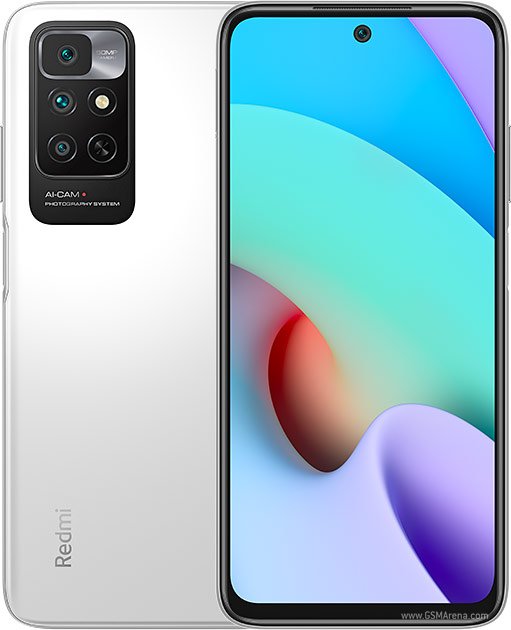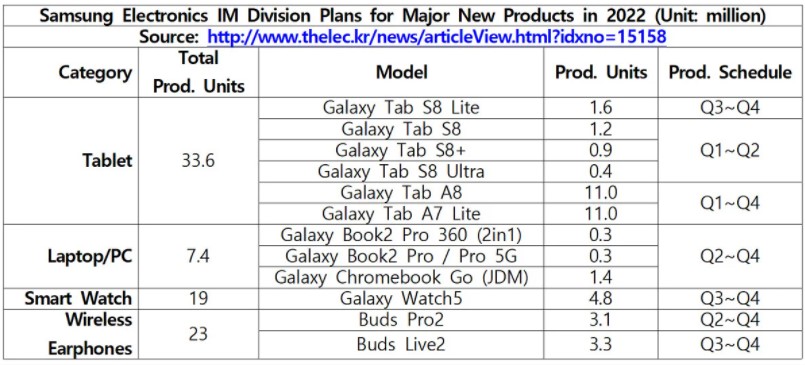
11-26 #ThanksGiving : Samsung has announced that it would build a new semiconductor manufacturing facility in Taylor, Texas; Samsung reportedly wants to launch more than foldable phones in 2022; Samsung has allegedly completely removed the Note series from its product planning for 2022; etc.
Samsung Electronics is expected to announce plans to build a USD17B semiconductor factory in Central Texas, a massive investment against the backdrop of a global chip shortage that has tripped up industries as varied as toy manufacturers and automakers. In Mar 2021, Intel announced it would spend an estimated USD20B on a pair of new factories in Arizona. In Jun 2021, Taiwan Semiconductor Manufacturing Co. (TSMC) broke ground on an Arizona facility with a projected USD12B investment. Texas Instruments (TI) has recently announced plans for new semiconductor plants in Sherman, Tex., part of an estimated USD30B investment. (Digital Trends, WSJ, The Verge, Washington Post, Reuters)
Samsung Electronics has announced that it would build a new semiconductor manufacturing facility in Taylor, Texas. The estimated USD17B investment in the United States will help boost production of advanced logic semiconductor solutions that power next-generation innovations and technologies. Groundbreaking will be in 2H22 with the target of having the facility operational in 2H24. Samsung’s total investment in the U.S. to more than USD47B since beginning operations in the country in 1978. (Apple Insider, Samsung, My Drivers)
Jon Peddie Research reports the growth of the global PC-based Graphics Processor Units (GPU) market reached 101M units in 3Q21 and PC CPUs shipments increased by 9% YoY. Overall, GPUs will have a compound annual growth rate (CAGR) of -1.1% during 2020–2025 and reach an installed base of 3,249M units at the end of the forecast period. Over the next 5 years, the penetration of discrete GPUs (dGPU) in the PC will grow to reach a level of 31%. (GizChina, Jon Peddie)
Apple is forging a closer partnership with Taiwan Semiconductor Manufacturing Co. (TSMC) in hopes of reducing its reliance on Qualcomm with plans to have the TSMC make 5G iPhone modems from 2023. The modem will use TSMC’s 4nm technology. Apple is also working on other connected components, including radio frequency and millimeter wave parts that connect to the modem itself, as well as a power management chip just for the modem. (Apple Insider, Asia Nikkei)
AMD’s current CPUs and GPUs are manufactured by TSMC, however, the company might swing towards Samsung when it comes to producing 3nm chips. TSMC is reportedly increasingly reserving increasingly more wafers for Apple. AMD is not the only business that is displeased with TSMC’s resource allocation procedures. Qualcomm would be in a similar situation and would have participated in the discussions with Samsung. (Android Headlines, Guru3D)
Nvidia has pointed out that its GPU graphics chip is 42 times more energy-efficient than the CPU. Nvidia has mainly introduced its 3 major advantages. The first is in the Green500 supercomputer, with 23 of the world’s 25 most energy-efficient supercomputers use their GPU chips. The second is chip energy efficiency. NVIDIA claims that their GPU chips are 42 times more energy efficient than CPU processors in AI operations. The third is Nvidia Green’s energy goal. They plan to increase the proportion of renewable energy to 65% by 2025. (My Drivers, Nvidia, 163)
The worldwide semiconductor shortage will persist through 2021, and is expected to recover to normal levels by 2Q22, according to Gartner. Across most categories, device shortages are expected to be pushed out until the 2Q22, while substrate capacity constraints could potentially extend to 4Q22. (Gartner)
Sony has announced that due to parts procurement delays, orders will be halted for A6100, 6400, A7 II. Other affected products include the ECM-B1M shotgun microphone and the PXW-Z190 professional camcorder. To alleviate these supply issues, Sony has created a partnership with TSMC to produce additional chips to combat the global issue of chip shortages. Construction on the factory will commence sometime in 2022, with production not expected to begin until 2024. (CN Beta, Nikkei Asia, Digital Camera World)
Samsung Display (SDC) is reportedly poised to expand production capacity for TV-use QD-OLED panels or IT-use OLED panels in South Korea. SDC has decided to withdraw from the LCD TV panel market and is phasing out production for hem. SDC has replaced equipment for LCD TV panels with a Gen-6 OLED (1,500×1,850mm) line to make small- to medium-size IT applications at its L7-2 plant. The QD-OLED panel production capacity at L8-1 is equivalent to 1M 55” and 65” QD-OLED TVs a year, and SDC is looking to sell the LCD panel equipment to BOE Technology or China Star Optoelectronics Technology (CSOT). (CN Beta, SamMobile, The Elec, Digitimes, Chosun)
Samsung Display has showcased flexible OLED screens can be folded, rolled, or slid. They feature high brightness, HDR10+ content playback, a low folding radius (R1.4), and better screen protection (UTG) compared to products from rival firms. The displays can be folded more than 200,000 times, equivalent to 100 folds and unfolds every day for 5 years. The remarkably tiny 1.4R curvature of the Samsung Flex OLED creates a sharper bend. (CN Beta, SamMobile, TechRadar, The Elec, Tom’s Guide)
Samsung reportedly wants to launch more than foldable phones in 2022, presumably Z Fold4 and Z Flip4. The hinge will have a simplified design which will be cheaper to manufacture, and the foldable display will have improved UTG (Ultra-Thin Glass), which will allow it to bend in a smaller radius. Samsung could announce its first foldable laptop in 2022, presumably under the name of “Galaxy Book Fold 17″. (Android Headlines, Naver, SamMobile)
Samsung Display CEO Choi Joo-sun has reportedly internally shared plans to mass-produce 55” and 65” QD-OLED panels for TVs and a 34” QD-OLED panel for monitors starting on 30 Nov 2021. Samsung allegedly plans to launch a QD-OLED monitor in the 33”-35” range. Samsung Display’s current production capacity of QD-OLED is 30,000 substrates and through MMG (Multi-Model Glass) production it can potentially produce 1M QD-OLED TV panels per year. LG Display is currently selling a 32” OLED monitor built on a panel from Japan OLED (JOLED). (CN Beta, Sina, TechPowerup, TFT Central, FlatPanelsHD, EDaily)
OPPO touts self-developed 90FPS extreme stable frame technology. It can intelligently judge the system power consumption load, combined with the steady-state temperature prediction model, bring smoother and stable frame rate performance. With the support of self-developed GPA3.0 technology, the game frame rate changes from a rough cliff to a gentle gradual, avoiding the frustration caused by sudden frame rate changes. (My Drivers, Tech Buzz)
Samsung has launched a new Expert RAW app in the Galaxy Store for Galaxy S21 Ultra. The new app enables multi-frame-based 16-bit RAW support for all the Wide, Tele & Ultrawide lenses. It also offers HDR functionality, lossless JPEG support, pro mode controls (e.g. ISO, shutter speed, exposure, manual focus, and histogram), and the ability to export RAW profiles to Adobe’s Lightroom. (Android Authority, Tizen Help, XDA-Developers)
Xiaomi will allegedly utilize Samsung’s 200MP camera image sensor in 2H22, while Samsung will first use it in 2023. Motorola is said to use this camera first before Xiaomi, which would release a phone with a 200MP before 2H22. (Android Headlines, Twitter, GSM Arena)
IC Insights projects global shipments of new-generation 5G smartphones will grow to 575M units in 2021. However, in light of an uncertain holiday buying season and lower mobile DRAM prices that are anticipated in 2022, smartphone makers remain cautious about purchasing too much DRAM in 4Q21 and have opted instead to focus on reducing their inventory supplies. IC Insights believes this will keep prices for mobile DRAM flat in 4Q21. In some cases, shortages of other IC components have impacted DRAM pricing. (CN Beta, IC Insights)
According to TrendForce, thanks to the strong demand for the two major applications of smartphones and servers, 3Q21 global NAND flash memory chip shipments increased by nearly 11%, and the average unit price increased by about 4%. At the same time, the industry’s total revenue increased by 15% from the previous month to USD18.88B. Samsung Electronics still ranks first in the NAND industry, with a market share of 34.5%. Due to the tight supply in the global NAND market, the average selling price of Samsung’s products has risen by as much as 10%. This brings Samsung’s NAND flash memory revenue to USD6.51B in 3Q21, an increase of 16.5% MoM. (TrendForce, TrendForce, Laoyaoba)
Strella Biotechnology tries to reduce waste in the U.S. food system — a problem that by some estimates creates as much emissions as 33M passenger vehicles. Strella biosensors monitor ethylene, a gas key to the ripening of fruits and vegetables. Apples accelerate their production of ethylene as they grow sweeter inside the storerooms. Once they are ready, the gas levels off, telling Strella’s monitors that they are ready to be sent to supermarkets. (CN Beta, Washington Post, Fresh Plaza, SlashDot)
Apple is introducing the capability to add digital IDs such as state-issued identification and driver’s license to its Wallet app. Apple has quietly updated its dedicated iOS 15 website to indicate that the ability to add a state ID or a driver’s license to Apple ID has been delayed to “early 2022”. (Neowin, MacRumors)
Germany plans to phase out coal use by 2030, 8 years earlier than previously planned, as part of its latest climate pledge. By 2030, the country still plans to cut emissions by 65% from 1990 levels. According to an estimate from nonprofit Climate Action Tracker, Germany needs to reduce its greenhouse gas output by at least 70% by the end of the decade to meet the 1.5ºC target put forward by the Paris Agreement. (Engadget, Bloomberg, BBC)
Vodafone has developed self-powered mobile towers and will deploy these across the UK, supporting the company’s target of achieving net zero for its UK operations by 2027. The Eco-Towers will also enable the deployment of new mobile sites in the most remote locations, without the major challenge and cost of connecting to the electricity grid. For the last 2 years, Vodafone and Crossflow Energy have been collaborating on the development of Crossflow Energy’s innovative wind turbine technology, combined with the latest in solar and battery technologies, to create a self-powered mobile network tower. (CN Beta, Vodafone, Business Green)
Apple is suing NSO Group, an Israeli firm that sells software to government agencies and law enforcement that enables them to hack iPhones and read the data on them, including messages and other communications. Apple is seeking a permanent injunction to ban NSO Group from using Apple software, services or devices. It is also seeking damages over USD75,000. (CN Beta, Apple, Reuters, CNBC, The Verge)
Xiaomi India has announced that it is working on a new “care” program without going into much detail. It appears an at-home Xiaomi repairs service could be in the works. There are other possibilities, such as upgrading Mi Care in India (2 years and 2 accidental broken screens are repaired for free, and the value can be renewed within 1 year, etc.), and the integration of after-sales functions in Xiaomi retail stores. (CN Beta, GSM Arena, Android Authority)
Italy’s antitrust authority has fined U.S. tech giants Amazon.com and Apple a total of more than EUR200M (USD225M) for alleged anti-competitive cooperation in the sale of Apple and Beats products. Both companies will be appealing the fine. (GSM Arena, AGCM, Reuters, Sina, WallStreet)
Samsung has allegedly completely removed the Note series from its product planning for 2022 and the main reason behind this is the foldables. The Galaxy Note 10 and Note 20 lineups got about 12.7M and 9.7M orders in 2019 and 2020, respectively while the Galaxy Z Fold targets alone go up to 13M. Until now, production on the Galaxy Note 20 has continued as the device has still been selling. In 2021, the series reportedly sold around 3.2M devices, around a third the number of Note devices sold in 2020. (Android Authority, GSM Arena, 9to5Google, ET News)
Google Ireland has agreed a EUR218M tax settlement with Revenue this year, according to documents just filed. This formed part of its total corporate tax bill of EUR622M, which is detailed in its 2020 financial accounts. Google Ireland has also paid EUR127.2M in interest to Revenue, the company documents show, bringing the full settlement to EUR345.2M. Google Ireland Ltd recorded turnover of EUR48.4B in 2020, up EUR2.7B on the EUR45.7B of a year earlier. (CN Beta, The Guardian, RTE, Irish Times)
Global smartphone sales to end-users declined 6.8% in 3Q21, compared to the same time period in 2020, according to Gartner. Component shortages disrupted production schedules, leading to lower inventory and delayed product availability, which eventually impacted sales to end-users. Apple reclaimed the No.2 position in sales to end-users and Xiaomi moved back to No.3 in 3Q21. (Gartner, CN Beta)
vivo V76 5G is launched in Malaysia – 6.58” 1080×2408 FHD+ v-notch IPS, MediaTek Dimensity 700 5G, rear tri 50MP-2MP macro-2MP depth + front 16MP, 8+128GB, Android 11.0, side fingerprint, 4100mAh 44W, MYR1,299 (USD310). (Gizmo China, vivo, GSM Arena)
vivo V23e 5G is launched in Thailand – 6.44” 1080×2400 FHD+ u-notch AMOLED, MediaTek Dimensity 810 5G, rear tri 50MP-8MP ultrawide-2MP macro + front 44MP, 8+128GB, Android 11.0, fingerprint on display, 4050mAh 44W, THB12,999 (USD392). (GSM Arena, vivo)
Redmi Note 11 4G is official in China – 6.5” 1080×2400 FHD+ HiD LCD 90Hz, MediaTek Helio G88, rear tri 50MP-8MP ultrawide-2MP macro + front 8MP, 4+128 / 6+128GB, Android 11.0, side fingerprint, 5000mAh 18W, 9W reverse charging, CNY999 (USD155) / CNY1,099 (USD170). (Gizmo China, GSM Arena, Mi.com)
OPPO Reno7 series is announced in China: Reno7 – 6.43” 1080×2400 FHD+ HiD AMOLED 90Hz, Qualcomm Snapdragon 778G 5G (SD7325), rear tri 64MP-8MP ultrawide-2MP macro + front 32MP, 8+128 / 8+256 / 12+256GB, Android 11.0, fingerprint on display, 4500mAh 60W, CNY2,699 (USD423) / CNY2,999 (USD470) / CNY3,299 (USD517). Reno7 Pro – 6.55” 1080×2400 FHD+ HiD AMOLED 90Hz, MediaTek Dimensity 1200 Max 5G, rear tri 50MP 1.0µm-8MP ultrawide-2MP macro + front 32MP, 8+256 / 12+256GB, Android 11.0, fingerprint on display, 4500mAh 65W, CNY3,699 (USD579) / CNY3,999 (USD626). Reno7 SE – 6.43” 1080×2400 FHD+ HiD AMOLED 90Hz, MediaTek Dimensity 900 5G, rear tri 48MP-2MP macro-2MPdepth + front 16MP, 8+128 / 8+256GB, Android 11.0, fingerprint on display, 4500mAh 33W, CNY2,199 (USD344) / CNY2,399 (USD376). (GSM Arena, NDTV, OPPO)
Samsung’s wireless business division has shared its business plans for 2022 with about 30 major partners. The plan reveals that Samsung is prepping 4 models in its upcoming flagship tablet lineup — the Galaxy Tab S8 Lite, Galaxy Tab S8, Galaxy Tab S8 Plus, and Galaxy Tab S8 Ultra. The company plans to kick off production of the high-end variants by 2Q22, while the Lite model will go into production by 4Q22. In addition, Samsung is planning to launch 2 Galaxy A series tablets, the Galaxy Tab A8 and Galaxy Tab A7 Lite, in 2022. (CN Beta, The Elec, XDA-Developers)
Xiaomi’s sub-brand POCO plans to launch several AIoT products in 2022. In addition to the previously rumored POCO Pop Buds TWS and a smart watch, there is also evidence recently that the brand will launch its first laptop. Recently, Redmi G series laptop batteries have passed the certification of India BIS. (CN Beta, Realmi Central, NDTV, 91Mobiles)
Fold is launching an augmented reality (AR) experience where players can earn Bitcoin in a kind of AR environment. Fold, a reward and payments app, has partnered with Niantic to create the Fold AR beta app, which overlays Bitcoin prizes over the real world. It uses Niantic’s real-world mapping tech and Fold’s feature for earning Bitcoin rewards. (VentureBeat, Ford)
Amazon has delayed its plan to integrate Comixology purchases and the platform itself into its broader ecosystem to early 2022. According to Amazon, the new Comixology app includes improvements to filtering and sorting. It also promises faster and more reliable downloads. Comixology Unlimited subscribers in the US will still be able to read their books in the new app, but alongside any downloaded through Amazon Prime or Kindle Unlimited. (Engadget, ComiXology, Pocket-Lint)
A consortium of roughly 70 Japanese firms, including the country’s three mega-banks, has said it aims to launch a yen-based digital currency in fiscal 2022 after beginning trials in coming months. The project, tentatively called “DCJPY”, is that three of the country’s largest banks will back it. Mitsubishi UFJ Financial Group, Mizuho Financial Group and Sumitomo Mitsui Financial Group have said they have been meeting since last year to build a shared settlement infrastructure for digital payments. (Engadget, Reuters)


